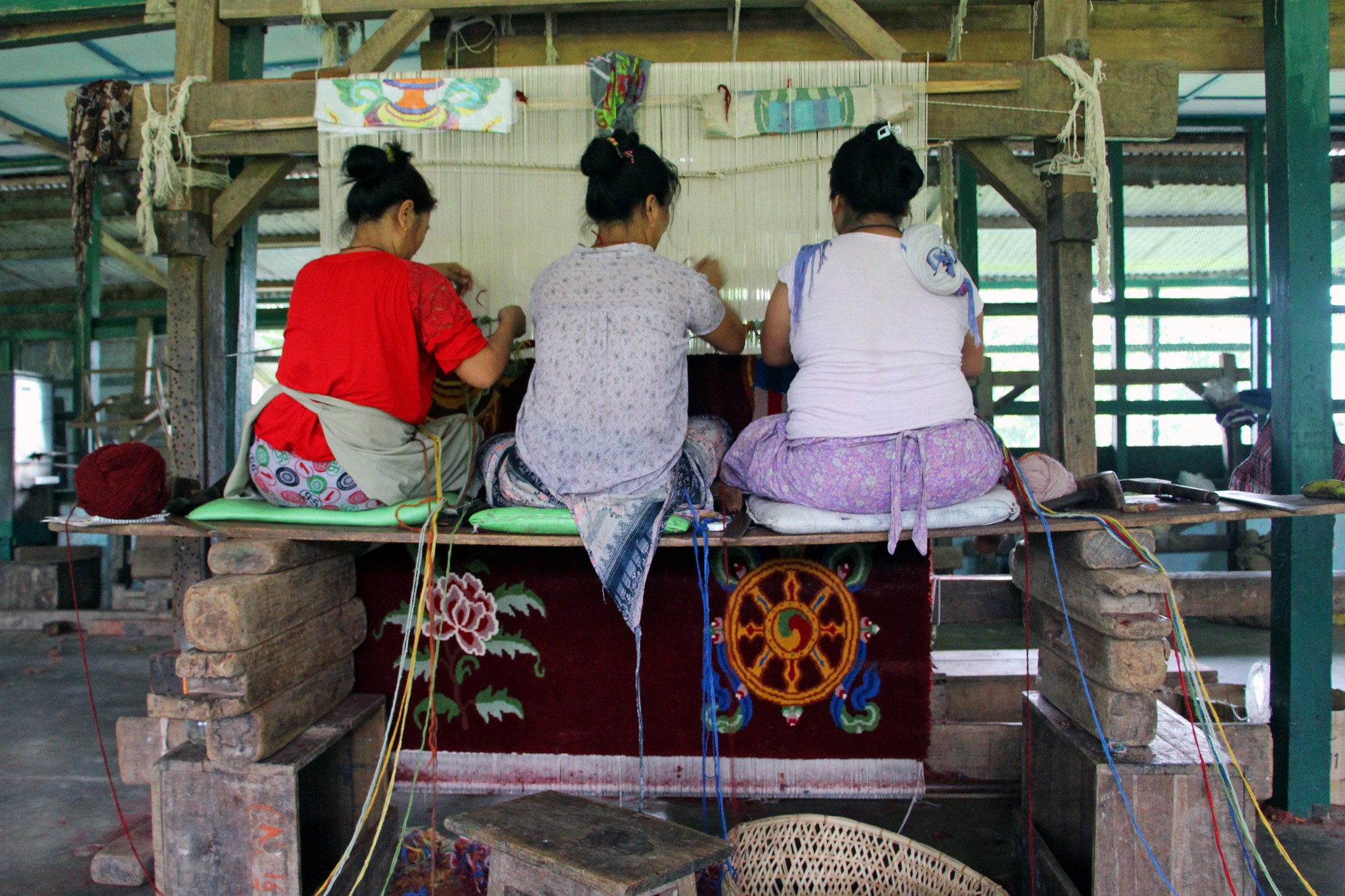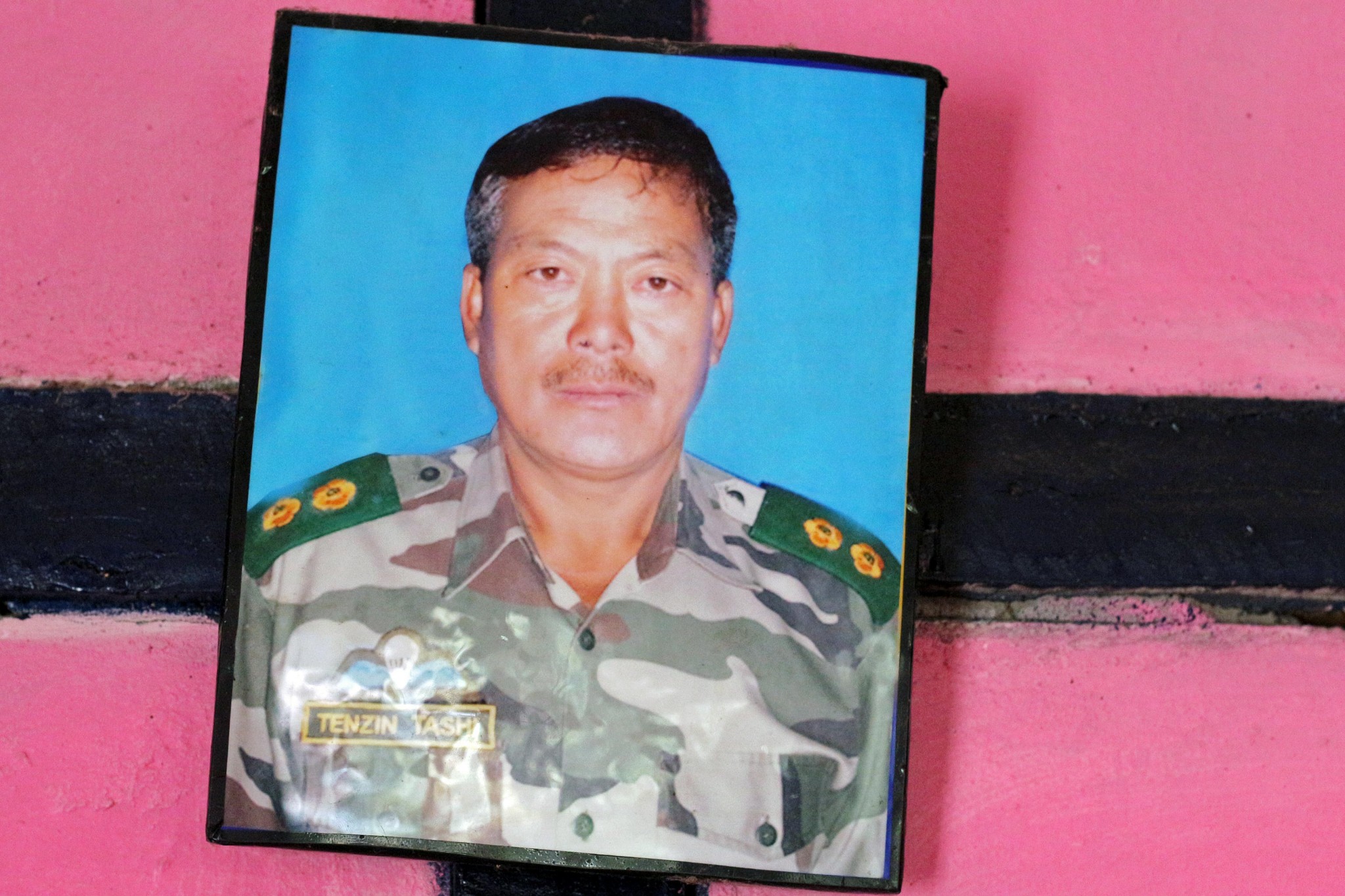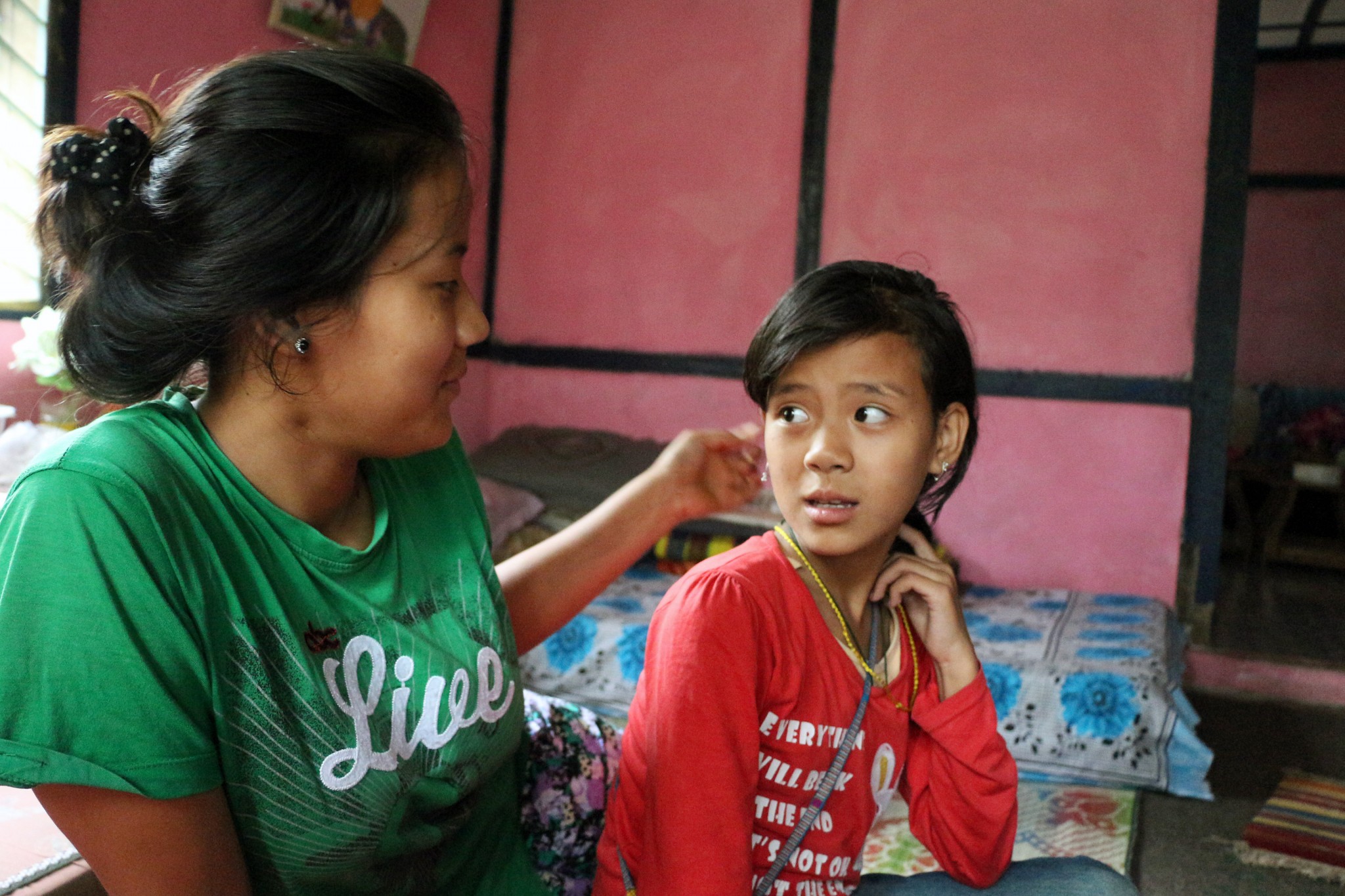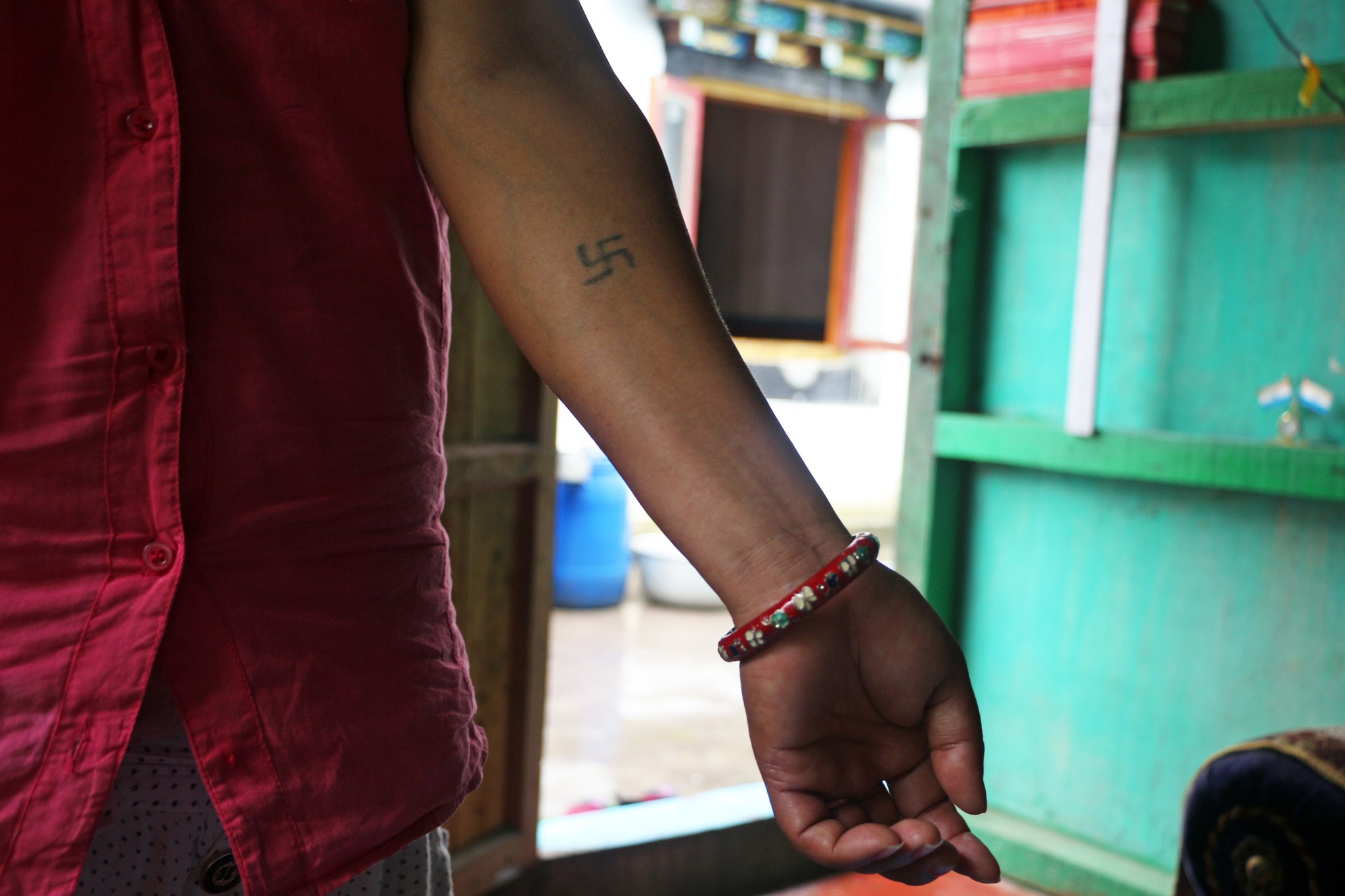Life in the Tibetan settlement
In Miao, each household received one acre of land from the Indian government for agricultural work. Dolma’s family uses their land to grow corn, rice, and millet. Sometimes her mother works in the handicraft centre and weaves rugs for the rare Indian tourist. Some people also have small businesses, like selling garments or having a restaurant. Dolma’s father supported his family by serving in the Indian army for 33 years. He was stationed in Ladakh with many other Tibetan soldiers, who protected India’s territory against disputes with China along the Indo-Chinese border. The family keeps a photo album of him in his uniform, surrounded by ice and snow in the mountainous region that borders Tibet.
While Dolma’s father was in the military, he would come home for his annual three month leave to farm. But while Dolma was away at boarding school her vacation didn’t overlap with her father’s leave, and for three years they never saw each other. Families in Miao often spend years apart. Either a brother or a father is in the military, or a sister is away at boarding school. In June, Dolma met briefly with her sisters Tenzin Jangchup and Tenzin Kunsel, who were away at school and came to Miao for their break. All four sisters look like a variation of their mother with the same almond eyes, high pronounced cheekbones and rosebud lips.
You might have picked up that all of Dolma’s siblings share the same first name: Tenzin. Tibetan naming conventions are based on spirituality rather than family lineage. There is no predetermined first name or surname. Some people have only one name. Many parents choose Tenzin as one of the names for their children after the Dalai Lama’s name, Tenzin Gyatso. Dolma’s first name, Dorjee, comes from the handheld object used in Buddhist practice that looks like a club with a ball shape at each end. The dorjee is symbolic for the thunderbolt and diamond – indestructability and irresistible force.
Near the end of June, when Dolma saw Kunsel, she embraced her with hugs and caresses. She hadn’t seen her second youngest sister in almost four years. Dolma’s voice softened when she spoke in their Pemako dialect to her sister. She was only seven-years-old when Dolma saw her last. Now, this eleven-year-old was taking overnight train rides by herself to come home from boarding school. They had so little time together, and Dolma knew then that it might be many more years before she might see her sister again after reaching Canada.
“I had to spend some time with family, that’s why I returned to Miao. I know it’s not (going to be) easy to go to India to see my parents,” Dolma said.
Dolma had no knowledge of Canada but she had at least experienced life outside the settlement. The ringtone on her cell phone played “Die Young” by American singer Kesha. She hummed to Taylor Swift while she cooked. Although she knew the words to a few western pop songs, her Miao school friends called her an innocent girl. She once had a boyfriend in college but even after it ended she still blushed around men. Her knowledge about life in North America was informed by a few Hollywood movies but her grasp of where she was going was limited. Her access to city life, job experience and technology dwindled when she returned to the seclusion of the settlement after hearing that she was leaving for Canada within the year.
“This is very unexpected that my name came out,” Dolma said about hearing the news in February. Her eyes shifted when she spoke about leaving her family in Miao. She said she would miss them once she left, especially their way of talking. In the months she spent at home, her parents weren’t able to prepare her for life in Canada. Instead they reminded her about their Tibetan culture that stemmed from their Buddhist principles.
“My family, they always tell me how to talk and to never harm anyone, and I have to help other people,” Dolma said.
While she hung around her family, she eased back into the daily routine in Miao that hadn’t changed for decades. They prepared food, cooked, collected water, took the cow to the field to graze, farmed, shopped at the Indian bazaar in the nearby town for tomatoes, potatoes and onions in the nearby town, and prayed.
“I’m just staying at home and helping my mom and dad. Helping my younger brother and sisters to study. Sometimes I feel bored at home and then I start to read a book and sometimes watch TV,” Dolma said through bursts of nervous giggles.
At this point in June 2014, she had never been on a plane; she didn’t know what a hamburger was or what beer tasted like. Some people from her community had the Buddhist swastika tattooed on their arms as a symbol of well-being, and she didn’t understand why there were rumours that this might be a problem in Canada. She didn’t know that it was Prime Minister Stephen Harper who finally agreed in 2010, three years after the Dalai Lama’s request, to share the burden of Tibetan refugees with India. She had so much to learn.
NEXT PART
Credits
Story and visuals by SHANNON LOUGH
Carleton University 2015





